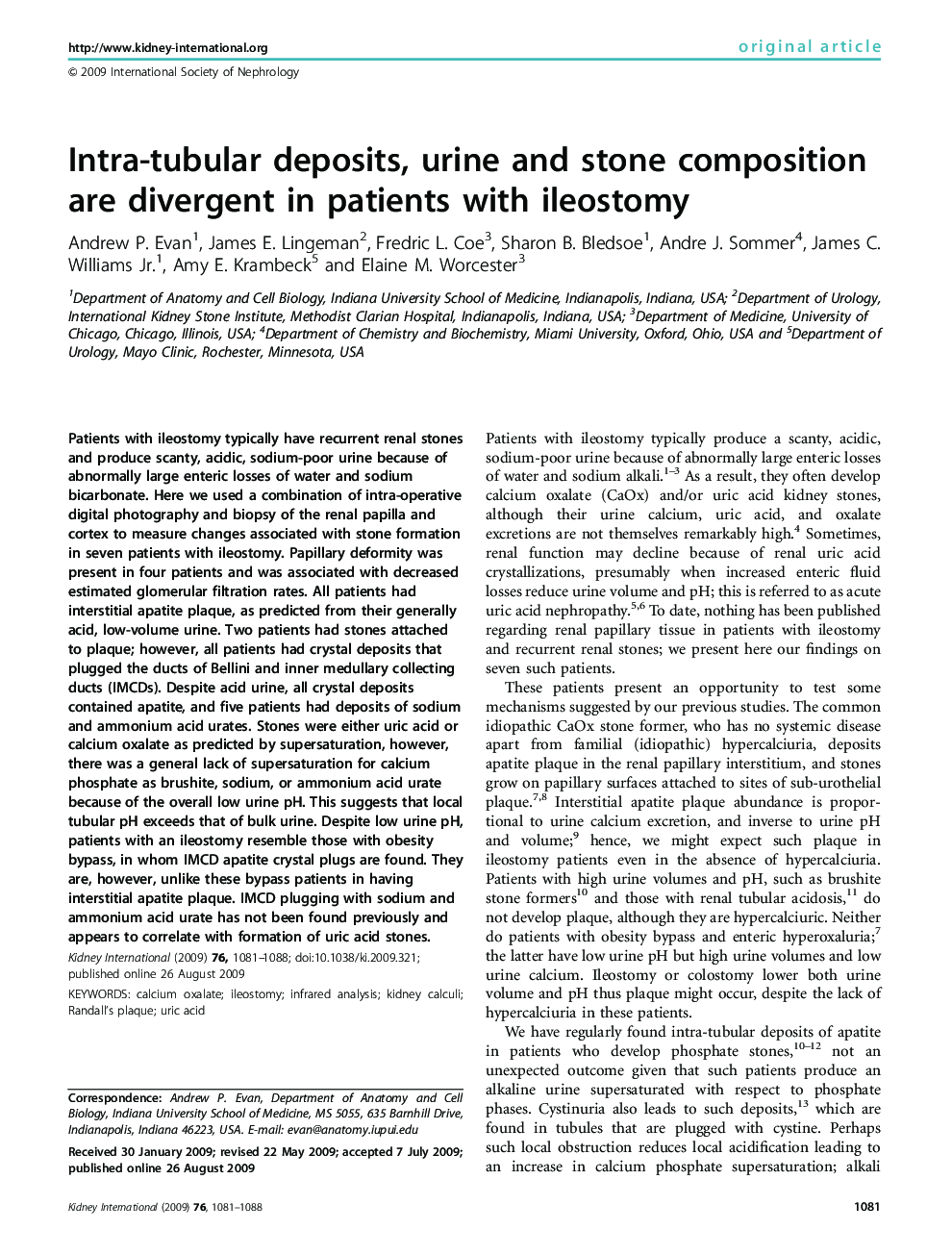| Article ID | Journal | Published Year | Pages | File Type |
|---|---|---|---|---|
| 3885605 | Kidney International | 2009 | 8 Pages |
Patients with ileostomy typically have recurrent renal stones and produce scanty, acidic, sodium-poor urine because of abnormally large enteric losses of water and sodium bicarbonate. Here we used a combination of intra-operative digital photography and biopsy of the renal papilla and cortex to measure changes associated with stone formation in seven patients with ileostomy. Papillary deformity was present in four patients and was associated with decreased estimated glomerular filtration rates. All patients had interstitial apatite plaque, as predicted from their generally acid, low-volume urine. Two patients had stones attached to plaque; however, all patients had crystal deposits that plugged the ducts of Bellini and inner medullary collecting ducts (IMCDs). Despite acid urine, all crystal deposits contained apatite, and five patients had deposits of sodium and ammonium acid urates. Stones were either uric acid or calcium oxalate as predicted by supersaturation, however, there was a general lack of supersaturation for calcium phosphate as brushite, sodium, or ammonium acid urate because of the overall low urine pH. This suggests that local tubular pH exceeds that of bulk urine. Despite low urine pH, patients with an ileostomy resemble those with obesity bypass, in whom IMCD apatite crystal plugs are found. They are, however, unlike these bypass patients in having interstitial apatite plaque. IMCD plugging with sodium and ammonium acid urate has not been found previously and appears to correlate with formation of uric acid stones.
